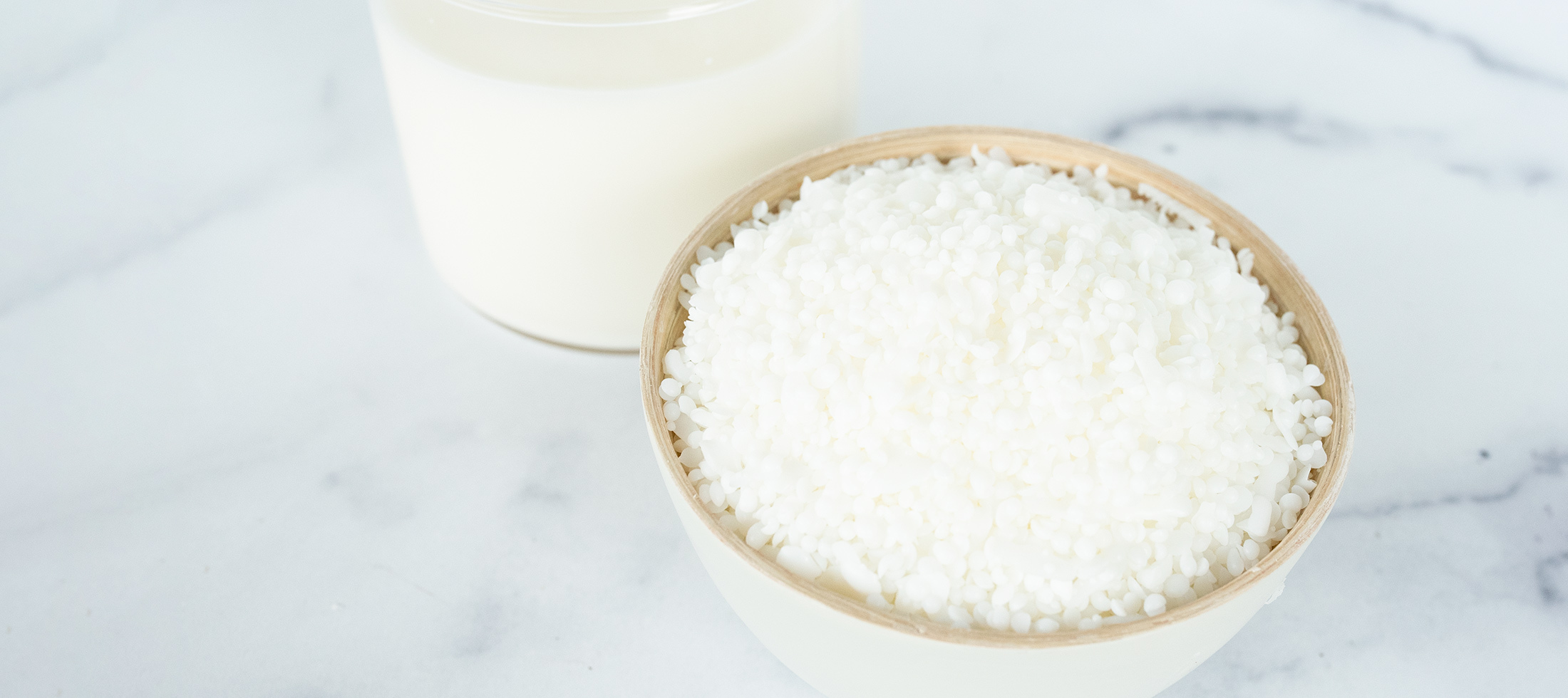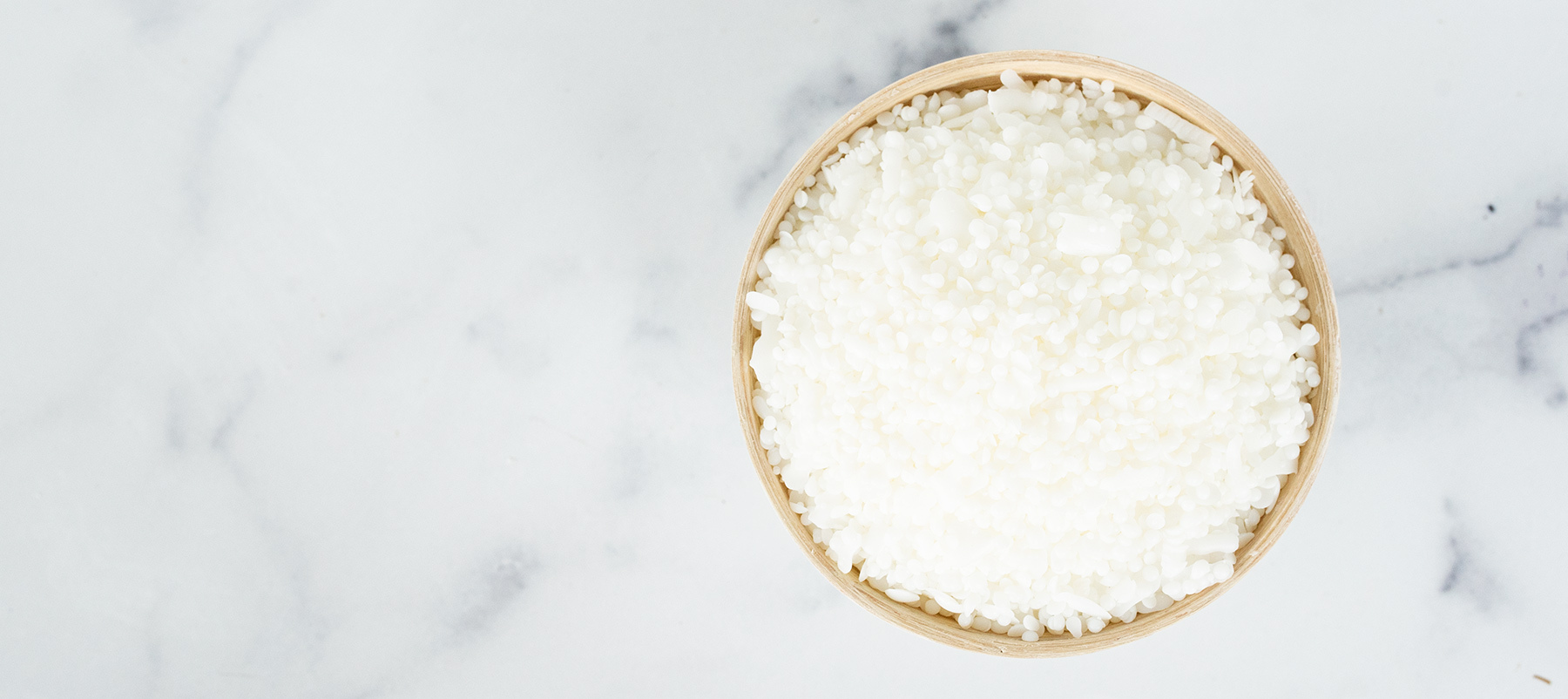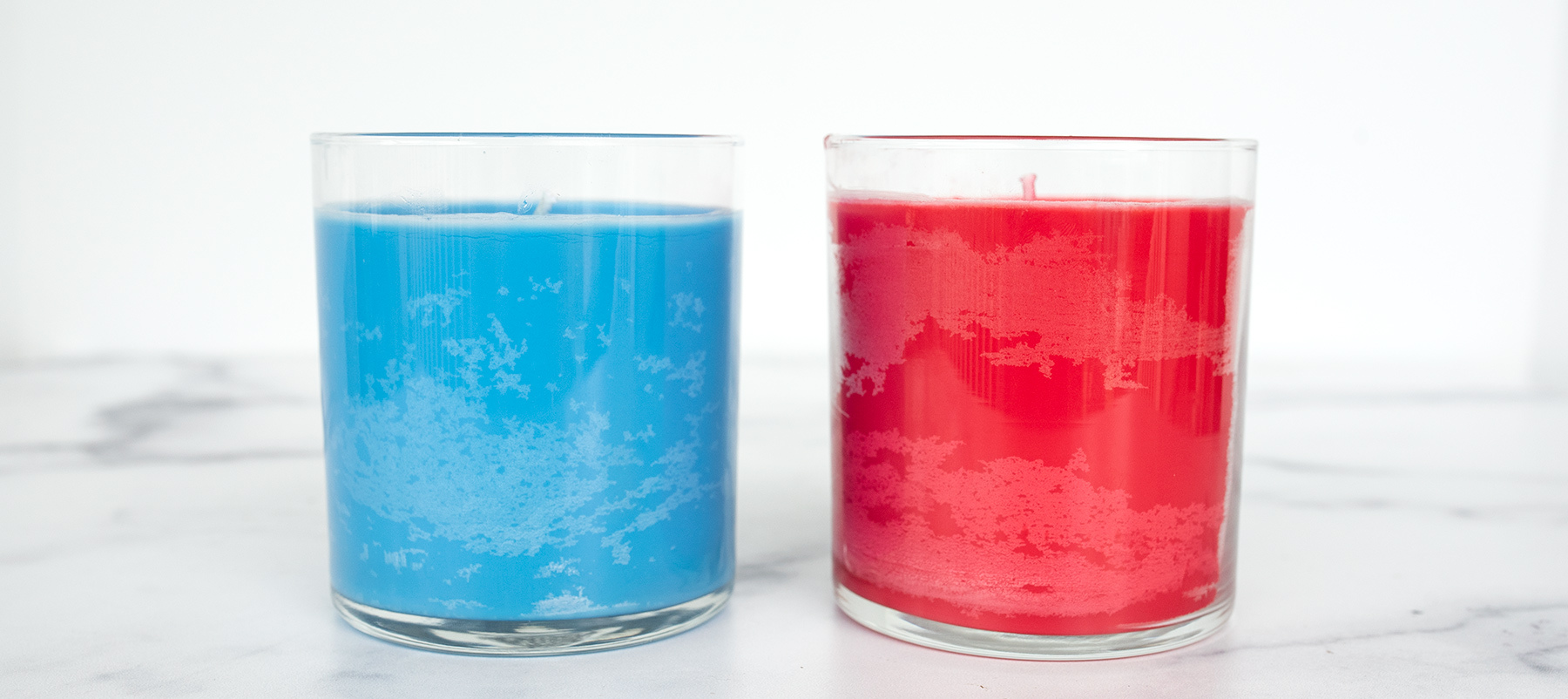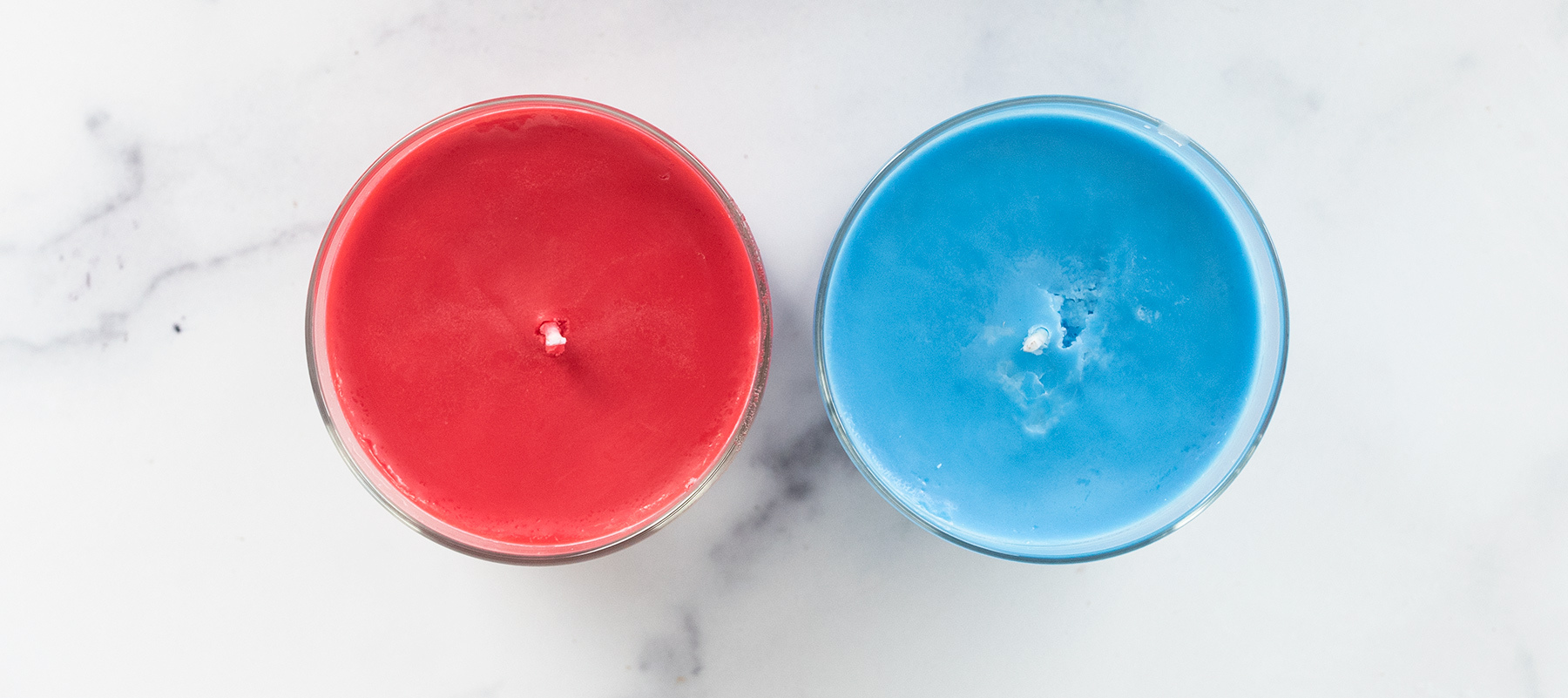LAB NOTES: SoyMax M124B

Our testing process
We divided our testing into three parts:
- Aesthetics: We test for adhesion, smooth tops, frosting and color retention.
- Fragrance Performance:We looked at fragrance solubility, retention, and cold and hot throw performance.
- Burn Performance:We tested various wick series and sizes to find the best burn.
For the fragrance testing segments, we used White Tea, Gardenia Tuberose and Very Vanilla fragrance oils. They have very different densities, viscosities, and ingredients. We hoped the variation would reveal potential solubility and burn issues.
General overview
Application: Container candles and tealights
Recommended Fragrance Load: 6-10%
SoyMax M124B is a blend of waxes with two different melt points, one a little lower than 124°F (51.1°C) and one a little higher so that the average resulted in a wax with a melting point of 124°F (51.1°C). The higher melt point makes this great for shipping in warmer climates. It is packaged in pastille form for easy scooping and measuring. This wax is designed to be blended for best performance and is 100% soy with no additives.

Aesthetics
Surface and glass adhesion
We tested several different pour temperatures from 170º (76.7°C) down to 135º (57.2°C). We did not experience a significant difference but found the glass adhesion was best poured at 150ºF (65.6°C). The tops did not come out perfectly smooth at any temperature. While it is common for 100% soy wax to have a mottled surface appearance, this wax did not have a typical finish. It had a shiny, crystal like appearance that we found to be quite pretty.
Frosting
Like any 100% soy wax, we did see some amount of frosting. When the wax was not dyed the frosting was not visible. We did find that higher fragrance loads (9-10%) and darker shades of dye promoted more frosting. The initial frosting was light and patchy and not a large area. Lighter colors showed significantly slower spread of the frosting, while the darker shades seemed to spread a little faster once it appeared.

Coloring
We tested our Blue Liquid Dye at a rate of 6 drops per pound (454 g) and our Red Dye Block at a rate of ½ block per pound (454 g). The color mixed in easily and thoroughly at 185ºF (85°C). The red dye produced a deep pink shade that is typical with 100% soy wax.

Blending
This wax does not have any additives, which makes it more difficult to achieve smooth tops. This wax is better suited for blending.
We tested paraffin wax, coconut oil, and beeswax as possible blenders. We used IGI 4630 as our blending wax and added 1 oz (28 g) of this to 15 oz (425 g) of the M124B and found this gave perfectly smooth tops. If you prefer to avoid paraffin we found that adding just 0.25 oz (7 g) of white beeswax to 16 oz (454 g) of M124B helped produce a much smoother top. We added a level tablespoon (15 mL) of coconut oil to 16 oz (454 g) to M124B and did not find that this helped smooth the top. We encourage you to experiment with blending this wax to get the performance you prefer and these are just a few of the things we tried to see how they affected the wax and are not meant to be specific suggestions for blends.
Fragrance performance
This wax can easily hold up to 10% (1 ⅔ oz or 47 g) fragrance oil, but most fragrances will not require that much to get a really strong hot throw. We tested various fragrance loads and found that they were all very strong.
Solubility
We did not have any trouble mixing in fragrances at loads between 6 and 10%. To really push the envelope, we added 12% Very Vanilla at 185ºF (85°C) and did find that it took a little extra stirring to fully incorporate all of the fragrance into the wax. We found that this candle was more prone to sweating and leaching fragrance from the surface. We do not recommend using this much fragrance in the wax, but thought it would be interesting to see if it would hold the fragrance or if we’d see some fragrance leaching.
Hot and cold throw
We checked the cold throw after 24 hours and found the Bamboo and Coconut and Very Vanilla fragrances were quite strong already at just 6%. The White Tea was faint but after 3 days it was much stronger. We began hot throw tests after 3 days, again we found the Bamboo and Coconut and Very Vanilla were both very strong while the White Tea could barely be detected. We allowed the White Tea to cure for a full two weeks and found that the hot throw was much stronger and the strength we get from other soy waxes. We always recommend testing for performance but with such varying results in the length of cure time we’d recommend allowing a two week cure for best results regardless of fragrance but your individual results may vary and allow for shorter cure times.
Burn performance
Wicking
We found that this wax performed more closely to the Golden Wax soy waxes. We tested both the CD and Eco series wicks and got great performance with both. We chose CD as our recommended wick for its variety of sizes, especially for single wick options in containers with a 3.5”+ (8.9 cm+) diameter.